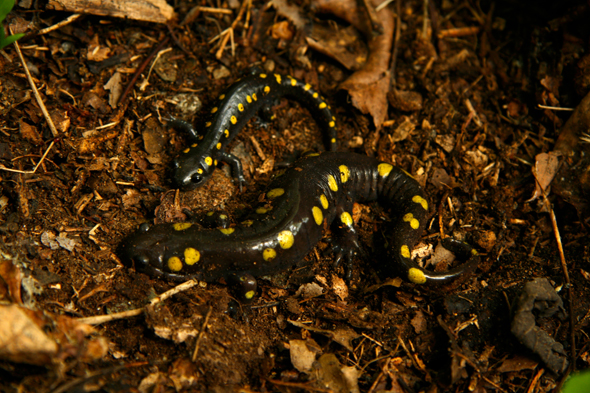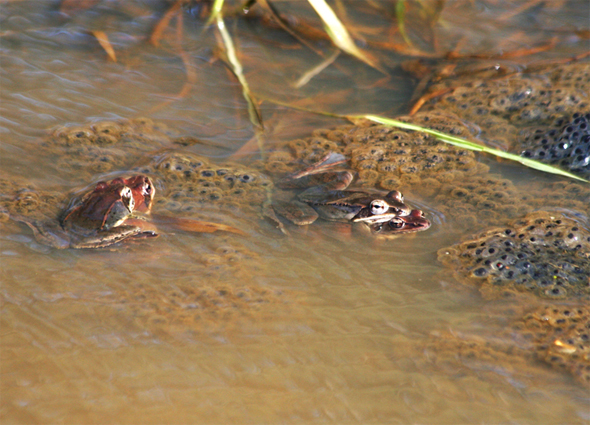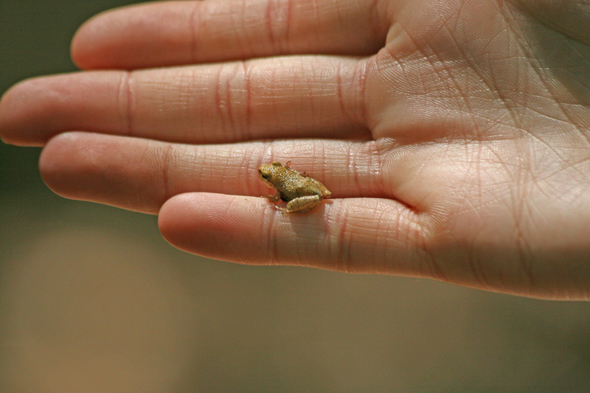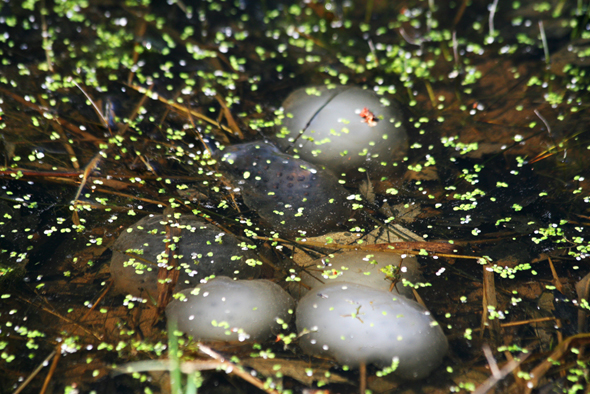Click here to check out our latest video showing our nighttime salamander search!
The temperature was 46 degrees and a steady rain had continued throughout the day, I knew what I had to do. After a long day of work my body pleaded with my brain to relax but from past experience I knew deep down that each year there are only a few chances to catch the major amphibian emergence. I grabbed my camera, a few flashlights, and the biggest cup of coffee I could find. My plan was to hit a series of coastal plain forest areas that I had seen vernal pools at various times throughout the last few years. I mapped out a route where I could loop from one end of Harford County to the other.
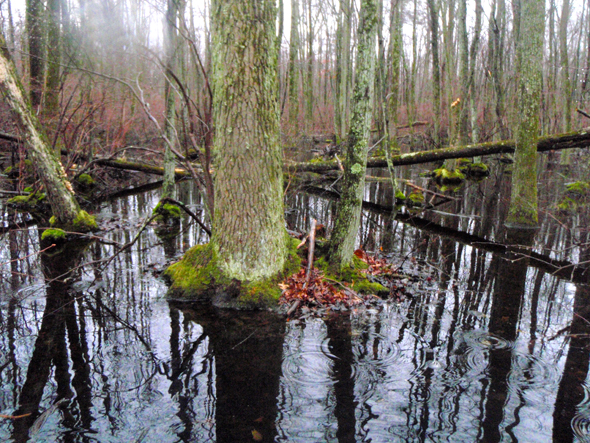
I arrived at the first site and instantly started noticing road carnage. The remains of American toads and spring peepers were scattered throughout the asphalt. Although I never enjoy seeing this, it was a good sign that things were out moving in the rain. I neared the location of a large vernal pool I was hoping to investigate and as if someone had planted it there, a spotted salamander was laid out in the middle of the road. I quickly moved it in the direction it was heading and snapped a few shots so that I could use the sighting for the Maryland Amphibian and Reptile Atlas (MARA). There was the sound of something off in the forest and knew instantly that I was hearing the first crop of wood frogs. I fumbled through the moist woodland, letting my ears guide me, and arrived at a large leaf-lined pool. The water was dancing with ripples from the falling rain. There was something else moving beneath the surface though and when I finally got closer I saw the unmistakable black and yellow flash. Spotted salamanders!
Here in this pool I saw movement from almost every direction. I crouched down and attempted to take a few photos but each time my shot of one salamander was interrupted by the appearance of another. There were so many of them and moving around so erratically that I couldn’t really count them. I didn’t want to overstay my welcome and began to worry about the integrity of my photographic equipment in the rain so I just took a moment to marvel at this wonder of nature. As I sat silently looking and listening, something moved a few feet off to my left. Something larger than a salamander. I quickly turned to the sound and noticed that a raccoon had shared my same curiosity and wanted to see what all the commotion was about. The bandit paid me no mind and bumbled on its way, probably fat and happy with a belly full of amphibian meat. These are the moments in nature that you never forget. That is the harmony where we are no longer a threat to nature but a protector and participant there to enjoy its tranquility.
I got back in my car and cruised along the road at a slow speed. My hybrid engine makes cruising particularly easy because it is relatively silent. I barely got a 100 feet down the road when I had to stop to move another spotted salamander. Soon after I did it again. By the end of the night I had moved eleven off the road and to safety on the forest floor. Knowing I still had miles to go, I started out towards a few areas where we needed data of their presence and made my way from the far east side of the county to the west. Many of the areas left to cover would be difficult to gain access to because the majority of the land is private property. A rainy night cruising the roadways would be my best chance at finding amphibians. It wasn’t easy but I put my eyes to the test, straining to see through the rain if there was something small hopping or an elongated shape that I could recognize as a salamander.
I drove through the night, stopping off at many pieces of litter, banana peels, and leaves thinking they were living creatures. As time went on I was able to start checking off multiple areas as I began finding spring peepers, wood frogs, and spotted salamanders scattered through my route. I made sure to pull over safely, wore a reflective safety vest, and had plenty of light. Despite my good intentions, from their perspective I guarantee many drivers went home angry that night after getting stuck behind “some crazy guy running around the road grabbing things off the asphalt and taking pictures of the ground”. I always wonder what people’s imaginations must tell them I was doing.
A couple of days later our group had planned a public outing to bring folks out at night to the same vernal pool I had visited and show them these unique creatures that most people will never see in the wild because they are not only difficult to find, but spend most of the year underground. The weather was cool and rainy and you could just tell that it would be perfect for finding amphibians moving around. We assembled a great team of volunteers to help with the search which consisted of a local teacher, a young student, a wildlife biologist, a medical doctor, and several other wildlife enthusiasts. For what may seem like an unusual group, we were all brought together by one common passion, to connect to the natural world and experience it for ourselves outside of television and text books.
The sound of the spring peepers and wood frogs were immediate evident and nearly deafening. The search for spotted salamanders took some time. Many of the small pools near the trail were void of life but once we located our first salamander we started spotting dozens of them. Most of them were found in the large vernal pool I had discovered earlier but many were in what appeared to be ruts from off-road vehicles that had filled with water. We searched the property for several hours, finding life in multiple areas, documenting them with our cameras and discussing the natural history of the creatures to expand our shared knowledge.
The spring amphibian emergence is a special time. If you don’t pay attention and wait until the conditions we believe to be ideal, you can miss it. The trick is to find the right temperature and precipitation combination and simply just start going out and checking the areas that seem like suitable habitat. Absence of life in a pool one night does not mean the next night will be the same. The signs will be there in the form of egg masses and the sounds that rise as the night begins to fall. We must protect these fragile ecosystems even if only present for part of the year. They are critical to the survival of many unique and wonderful species. Maybe next year you can join us to enjoy a night of salamanders.

